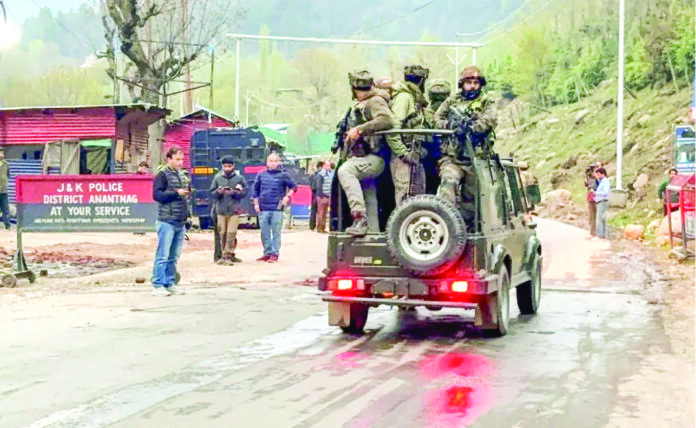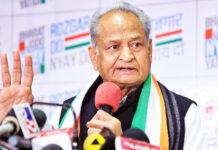
Pakistani state-linked entities engineered and amplified a narrative framing the Pahalgam massacre as a ‘false flag’ operation carried out by India.
NEW DELHI: On April 22, 2025, a terrorist attack in Pahalgam targeting Indian civilians was immediately followed by the rapid emergence of a digital disinformation campaign originating from Pakistan.
A new investigative report by the US-based Network Contagion Research Institute (NCRI), supported by Cyabra and ThinkFi, has detailed how Pakistani state-linked entities engineered and amplified a narrative framing the Pahalgam massacre as a “false flag” operation carried out by India.
The report documents a structured three-phase operation: narrative seeding by Pakistani officials, coordinated amplification through inauthentic bot networks, and the internationalisation of the narrative via foreign influencers with known affiliations to adversarial regimes.
At a macro level, the findings reveal how Pakistan’s deep state and military have been working to strengthen their narrative warfare capabilities.
As per the findings, former Pakistani High Commissioner Abdul Basit was one of the earliest voices to frame the attack as an Indian fabrication, posting just hours after the incident that Kashmiri militants do not target civilians.
His messaging was reinforced days later through an online appearance with Jackson Hinkle, a US-based political commentator with a documented record of supporting Russian, Chinese, Iranian, and Houthi positions.
NCRI found that Hinkle’s posts promoting the false flag theory on May 6—the day India launched retaliatory strikes under Operation Sindoor into Pakistani territory and Pakistan-occupied Kashmir—attracted over 2.5 million views.
Significantly, Hinkle’s reach among Western audiences was used to reposition Pakistan’s internal propaganda as international scepticism of India’s counterterrorism claims.
Between April 22 and May 6, more than 23,000 tweets pushed the false flag theory, many of them featuring hashtags such as #IndianFalseFlagExposed, #BJPBehindPahalgam, and #ModiGoneMad. Nearly 40% of the accounts posting these tweets displayed clear signs of coordinated inauthentic behaviour, with hundreds of them having been created in April 2025.
The report notes that these were not merely organic reactions but part of a calculated influence operation.
Visual content was central to the campaign. Generative AI tools were used to create memes emblazoned with phrases like “Indian false flag exposed,” superimposed on the Indian flag, weapons, or militant figures. The consistency of visual design, slogan format, and synchronised posting schedules suggested centrally managed distribution—pointing to clear intent and organisation behind the campaign.
The use of Hinkle was not incidental. The NCRI highlights that he has appeared on Hezbollah-owned media, delivered speeches at Houthi-organised conferences in Yemen, and claimed vetting by both Russian and Chinese intelligence.
His participation in the Pahalgam false flag narrative represents a pattern of alignment with state interests hostile to both India and the West. On May 6, Hinkle released a flurry of tweets alleging that India orchestrated the attacks as a pretext for military escalation. His online presence, followed by nearly three million users, allowed the conspiracy theory to reach a scale that would have been unachievable through Pakistani state media alone, which lacks credibility due to its history of pushing false narratives—an issue that has also begun to plague certain Indian media entities.
The Pakistan-run campaign’s architecture extended beyond conventional state channels and into diaspora-facing digital spaces.
NCRI found that British influencers Mohammed Hijab and Zeeshan Ali were also involved in this operation. Both promoted the false flag theory through podcasts and video segments targeting Western Muslim audiences.
These individuals had previously featured in NCRI’s 2022 investigation into the Leicester riots, where anti-Hindu disinformation campaigns contributed to real-world violence in the United Kingdom. Their involvement in the Pahalgam narrative illustrates how sectarian framing is deliberately introduced to deepen communal polarisation abroad, under the guise of civil rights or geopolitical analysis.
The study also observed a tactical evolution in the selection of hashtags. While the initial surge in tweets focused on Kashmir-related terms and generic anti-India sentiment, later waves incorporated visual misinformation, including a fabricated Reuters headline about Indian jet crashes.
The campaign linked unrelated developments—such as India’s temporary suspension of the Indus Water Treaty—to claims of “water terrorism,” casting India as a regional aggressor. AI-generated visuals often juxtaposed doves, maps, and weapons to suggest that India posed a threat to global peace—another recurrent theme in Pakistan’s broader diplomatic messaging.
NCRI concludes that the Pahalgam disinformation operation was not an isolated attempt to shape perception but part of a strategic playbook that has been observed in earlier incidents, notably after the Pulwama terror attack in 2019.
In both cases, the timeline of attacks was followed by rapid online attribution denial, foreign influencer involvement, and a deliberate attempt to shift focus from Pakistan’s proxies to alleged Indian misconduct. The inclusion of AI tools, bot networks, and diaspora-targeted outreach reflects a growing sophistication in how such narratives are executed and sustained.
Pakistan’s Defence Minister Khawaja Asif repeated the false flag claim during an international interview, even as state media and prominent social media accounts reinforced comparisons with earlier attacks.
The pattern followed throughout this operation was one of state-narrative amplification, layered through independent-seeming actors and content creators—many of whom operate across multiple languages and jurisdictions.
Without meaningful countermeasures, including the restoration of public trust in the electronic media, such operations are likely to increase in both frequency and impact against India. With a significant section of Indian news channels having prominently peddled fake news during Operation Sindoor, their credibility—as multiple diplomats posted in New Delhi told The Sunday Guardian—now stands virtually extinguished. It is only the print media, they believe, that can still be taken seriously.







